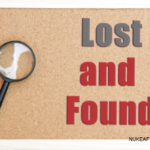
Other research has demonstrated the role of neutrophil extracellular traps (NETs), which are released in innate immunity host responses to both pathogenic organisms and endogenous inflammatory signals. NETs are extruded spider web-like structures in neutrophils with nuclear degradation that are enriched in proteases with the capacity to increase killing microorganisms, damage to vascular and connective tissues, degradation of inflammatory cytokines and generation of citrullinated protein neoantigens. Neutrophils amplify early gouty inflammation through oxidative stress and chemokines, but, at high density, neutrophils also form NETs in response to urate crystals, which is critical in shutting off the acute inflammatory response.
Specifically, research published by Schauer and colleagues showed that MSU crystals induce uncontrolled production of inflammatory mediators from neutrophils and persistent inflammation.5 Using models of neutrophilic inflammation, NETosis-deficient mice developed exacerbated and chronic disease that could be reduced by adoptive transfer of aggregated NETs, they wrote. Their findings suggest that these aggregated NETs “promote the resolution of neutrophilic inflammation by degrading cytokines and chemokines and disrupting neutrophil recruitment and activation.”
The research is important, Dr. Terkeltaub said, because neutrophils have been thought of mainly as “killing machines,” a vital defense system that can phagocytose and kill bacteria and fungi. Now “NETs have been implicated in lupus and vasculitis … and they appear to promote endothelial damage and thrombosis in those diseases.” In contrast, in gout, NETosis is an inflammation “stop signal” and may be a factor in tophus formation and growth, Dr. Terkeltaub said, and “collectively, these developments underscore the work of Malawista and others in how the short-lived neutrophil, even lacking a functional nucleus, has long-lived effects on innate and adaptive immune responses in rheumatic diseases.”
AMP-Activated Protein Kinase (AMPK) & Gout
Understanding how AMPK naturally and therapeutically limits urate crystal-induced inflammation is another important development in gout research, Dr. Terkeltaub said. AMPK is a metabolic biosensor with antiinflammatory activities. “Activated AMPK promotes glucose transport, insulin sensitization, lipid metabolism, the biogenesis of mitochondria and proper function of mitochondria and muscle stamina,” he said. “It is not simply a metabolic super-regulator, but it also suppresses inflammation and oxidative stress. It inhibits inflammatory responses.”6
Tissue AMPK activity is suppressed in gout, however, because of excesses in nutrition and body weight, diabetes and poor physical fitness in many gout subjects, and by likely additional excesses in alcohol consumption and ambient soluble urate in many gout patients. Results of a study published in 2014 by Wang et al demonstrated that AMPK activity not only limits MSU crystal inflammation, but also transduces multiple antiinflammatory effects of colchicine in macrophages.7 “Targeting increased and sustained AMPK activation in inflammatory cells” should be investigated further so the efficacy of prophylaxis and treatment of gouty inflammation could be enhanced, they concluded.
